Posted by Steve Durbin on August 29th, 2007
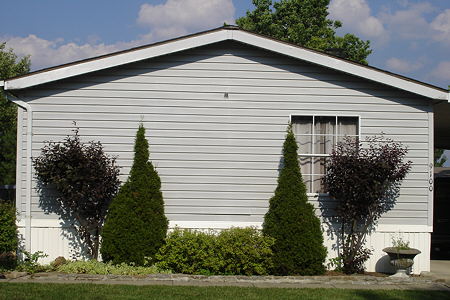
I’ve been working on a series of photographs of the homes in my neighborhood. This project started after about three years of walks with my dog at different times of the day and encompasses a whole gamut of thoughts and feelings that I’ve had towards my home.
The more I saw the same things every day, the more meaning all of it took on for me until I had to get my camera and take photos. I suppose there’s a lot I could write about but I want to focus on two ideas regarding this project:
more… »
Posted by Steve Durbin on August 28th, 2007
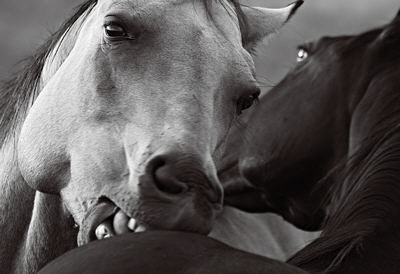
Now for something completely different from my usual inanimate landscapes. Probably almost every photographer in Montana has done horses at some point. They were actually a major subject of my first photos when I started up with digital photography, and starred in my first self-assigned project (not on the web site; I guess it’s still in progress). But they were eventually neglected as I mostly pursued my long-term interest in landscape and abstraction. Then I saw some postcards of the Horse Nudes portfolio of Kathe Lesage and realized what I’d been missing. Last weekend I had a chance to do something about it.
more… »
Posted by Karl Zipser on August 27th, 2007
A photograph offers so many (and so obvious) advantages as a source for painting as to raise the question: why would any responsible person even consider painting a landscape outdoors?
I’ve been thinking about this while painting outside lately. I think the answer comes down to this: I need to ask, what is it that I am painting when I paint a landscape?
Is it the landscape?
Or is it my being there, my reaction to the landscape? more… »
Posted by Birgit Zipser on August 24th, 2007
The dunes have a fall towards the Great Lake that is difficult to capture in its full steepness.
Below a raven and crashing wave:
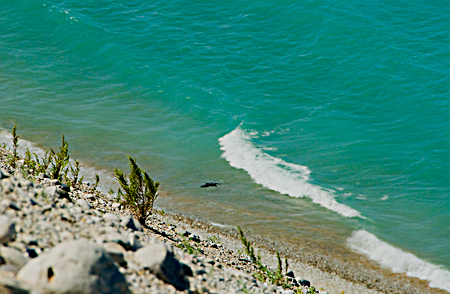
more… »
Posted by Sunil Gangadharan on August 23rd, 2007
Color is a difficult thing to get your arms around. In fact I think one could spend a whole lifetime trying to understand this facet of art and become proficient in only a miniscule percentage of the approximately three million degrees of color difference that the untrained human visual cortex could distinguish easily. On the canvas, getting the right overall value of a particular hue such that the harmony of the whole remains preserved is rendered even more difficult given the reality that most oil paint companies make a maximum of about 60 unique hues of differing chromaticity. As I trudge through the long stairwell leading to my color nirvana, I have realized that there are two ways of approaching and understanding it. The approach is a bit dichotomous, but it seems to serve me well. more… »
Posted by Steve Durbin on August 21st, 2007
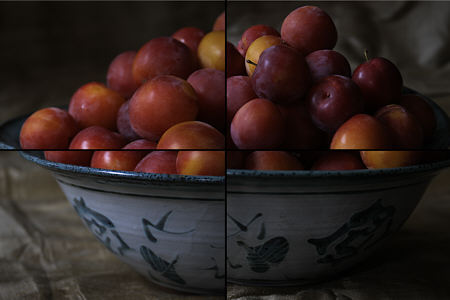
In my current studio phase I’ve been experimenting with an idea that goes back a while, but was most recently brought to life by a show I saw that included the painter Michael Haykin. I’ve been wanting to find a way to combine images in a way that yields something that is more than the sum of its parts. Probably most artists have considered making a Cubist-like multi-perspective image, but as June found out in her struggle to make Cubist biscuits, it’s not at all easy. I certainly haven’t had much success myself, but this time around I do feel I’ve learned something that will affect future work.
more… »
Posted by Karl Zipser on August 20th, 2007
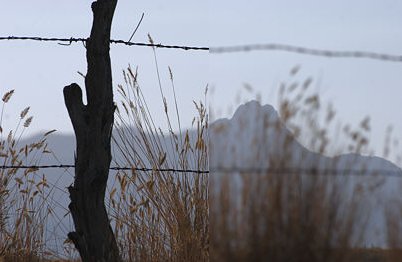
Last week Steve pointed out that a lens-based optical system like a camera or the eye can only focus at one field of depth at a time — meaning, as some sample images he presented illustrated, that other parts of the scene will be out of focus. The images Steve presented were of a landscape. In one image, some plants in the foreground were in focus, whereas a distant mountain was a blur. In the second image, the mountain was in focus, the foreground a blur. [Here I have combined them in one image.] Why, Steve asked for the original images, did painters — at least before the invention of photography — not paint the blur like this? More generally, why don’t artists paint what they see? more… »




